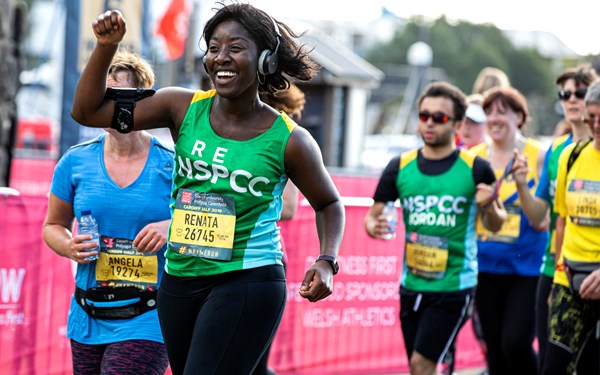Download generic training plans
Running blogs
Training FAQs
Sometimes the way we write Full Potential plans can seem confusing. So we'll break one down in stages as an example:
10 minutes Warm Up, 3 x 10 minutes at Threshold effort with a 90 second recovery, 10 minutes Cool Down
- 10 minutes Warm Up = do a warm up for around 10 minutes
- 3 x 10 minutes at Threshold effort with a 90 second recovery = run for 10 minutes, have a 90 second recovery, run for 10 minutes, 90 seconds recovery, run for 10 minutes, then 90 seconds recovery.
- 10 minutes Cool Down = do a Cool Down for around 10 minutes.
You might not be able to do all the training in the plan, or not in the order we've suggested. Our plans are built with this in mind.
- The key sessions in your plan are highlighted in green. These are the essential sessions in your week.You can switch the days around to fit with your commitments, but try to avoid squeezing two key sessions back to back.
- The sessions in black are your supplementary ones. Try and do as many as possible, but when you need to drop a run, make sure it's one of these.
Every time you run you'll be faced with different conditions; the weather, surface, amount of sleep, how well fuelled you are, these and many other factors will affect the pace you're going to run on a given day. By running to a set effort level, we can take these variables into account and avoid over-training.
Each type of run has a 'Talk Test', which means: how much talking can you do while running at each level?
For example, on an easy run you should be able to have a full conversation. So when your plan says "run 40 minutes Easy Effort", this means 40 minutes of running at a conversational pace. On one day this could be 9 minutes a mile, on another it could be 9 minutes 30 seconds.
The variation is not a problem. Where people go wrong is when they think that, because 'easy' was 9 minutes on one day, then it should be that every day. Then they're not looking at the bigger picture of training, which we discuss more below.
Setting your runs for time gives you a lot more control over the amount of running you're doing.
"10 miles Easy" is very different if your marathon time is 5 hours, or 3 hours. Whereas "60 minutes Easy" is the same quality of training for everyone.
The other benefit is that it stops you doing too much. You don't want to do too much training and end up with an injury.
It will mean on a long run you need to think about your route a little bit more, and it's certainly not an issue if your run is 10 minutes shorter or longer than in the plan.
There's no set distance you need to run to be ready for the marathon. We've successfully coached athletes to run marathons with only 12 miles as their longest training run.
It can be beneficial to run longer distances if your body's ready for it. But if you aren't then you'll run too hard in training, carry too much fatigue into the marathon and not run your best.
Endurance is built with consistent training and not one long run. For example, after 3 hours of running the fitness gains are offset by the recovery time needed and the impact on future training sessions.
By keeping it to 3 hours we avoid the risk of injury and avoid overtraining.
Conditioning work is an essential part of training as it prepares your body for the impact of the miles ahead. This can range from activities like Yoga and Pilates, to fitness classes or exercises available in our training blogs. You don't need to do hours of this work either. 20 minutes once a week is a great start.
Yes, you definitely can! You'll be racing on roads, so you want to do a good percentage of your running on tarmac to prepare your body for this. But the treadmill is also great because it's in a warm, safe environment and you can train on it when you need to.
Our top tip: set the incline to 1% to mimic running outdoors as you need to pick up your knees a little more.














